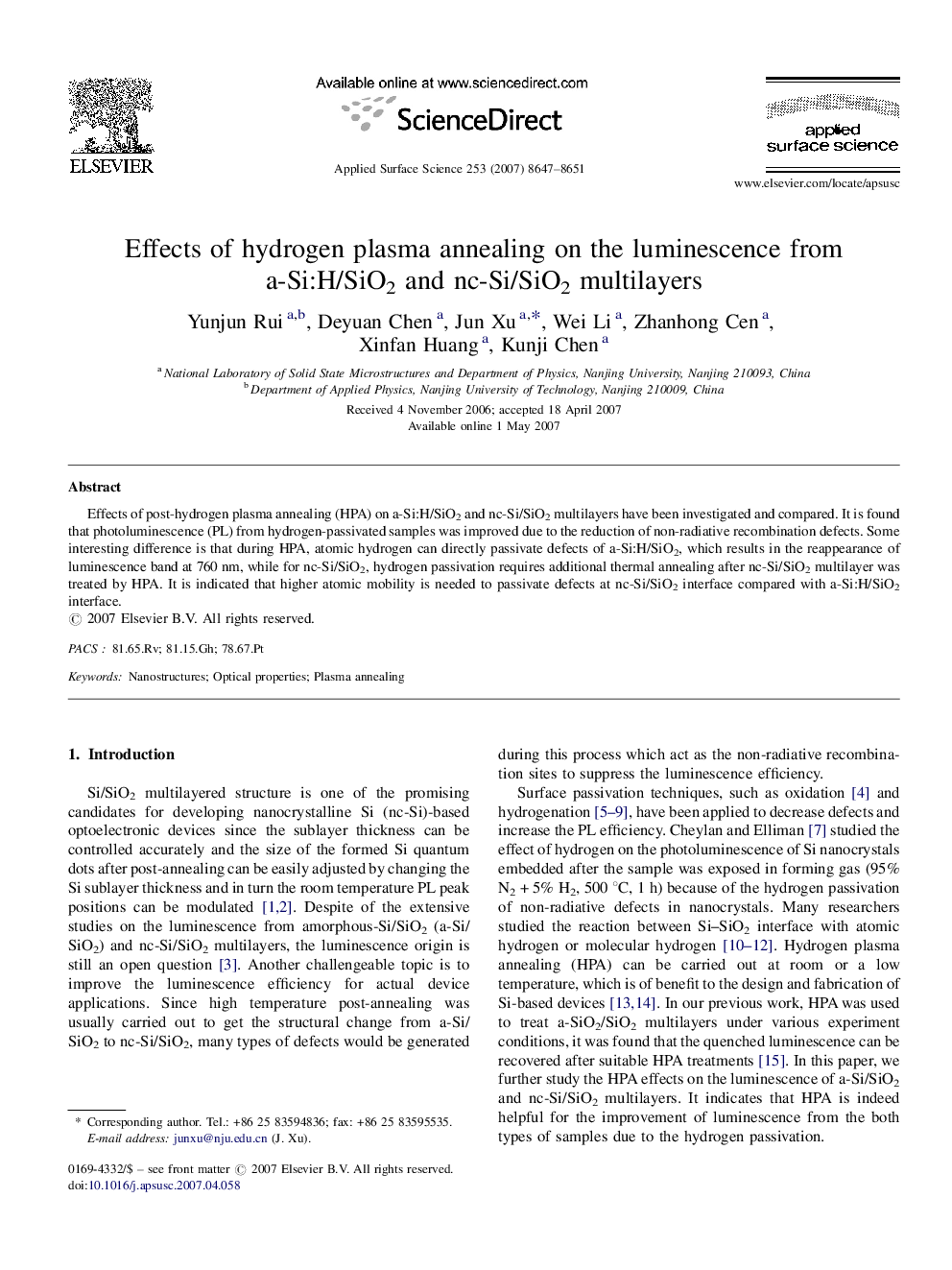| Article ID | Journal | Published Year | Pages | File Type |
|---|---|---|---|---|
| 5364029 | Applied Surface Science | 2007 | 5 Pages |
Abstract
Effects of post-hydrogen plasma annealing (HPA) on a-Si:H/SiO2 and nc-Si/SiO2 multilayers have been investigated and compared. It is found that photoluminescence (PL) from hydrogen-passivated samples was improved due to the reduction of non-radiative recombination defects. Some interesting difference is that during HPA, atomic hydrogen can directly passivate defects of a-Si:H/SiO2, which results in the reappearance of luminescence band at 760Â nm, while for nc-Si/SiO2, hydrogen passivation requires additional thermal annealing after nc-Si/SiO2 multilayer was treated by HPA. It is indicated that higher atomic mobility is needed to passivate defects at nc-Si/SiO2 interface compared with a-Si:H/SiO2 interface.
Related Topics
Physical Sciences and Engineering
Chemistry
Physical and Theoretical Chemistry
Authors
Yunjun Rui, Deyuan Chen, Jun Xu, Wei Li, Zhanhong Cen, Xinfan Huang, Kunji Chen,
